
A Helping Hoof
We do our best to provide large, safe habitats for all the Preserve’s residents. But accidents still happen. One of the most common reasons you’ll see an animal limping is due to sprains from Arctic Ground Squirrel holes. But, typically they’re back to normal in a few weeks.
However, for Jesse the moose, it hasn’t been so simple. Jesse injured her hoof late in 2020. The culprit? An errant nail that punctured her foot just above the hoof.
The Preserve’s Animal Care team responded immediately. First they removed the nail and gave her some antibiotics. Next, they followed that up with cleaning and bandaging. After 6 weeks the bandages were off and Jesse appeared to be back to normal.
Another month passed and the Animal Care team noticed she wasn’t putting weight on that hoof again. They repeated the procedure, cleaning and bandaging again. By April the bandages were off again. Everything looked good.
But with the heat of summer, the moose have been spending more time in the wetland. All that time in the water softens their hooves, making it easier to re-injure. In July 2021, the team noticed she was favouring her foot again.
The first challenge was to move her out of the wet summer habitat to a drier location. With that solved, they were able to do another round of treatment on Jesse’s hoof.
• • •
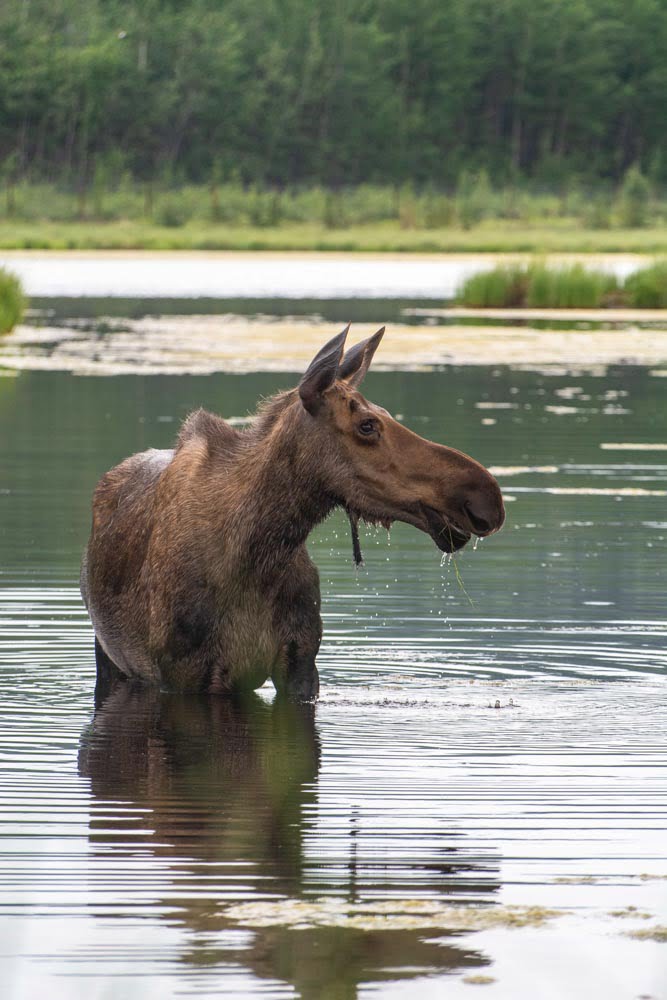
Minimizing Stress
Dr. Maria Hallock used a jab stick (a long pole designed to inject medicine) to deliver sedatives to Jesse. Those drugs only took a few minutes to take effect.
The Animal Care Team moved in. Animal Care Assistant Bree immediately covered Jesse’s eyes. The towel helps reduce stress. Although she can’t move, Jesse was still aware of her surroundings.
Next, Bree, pulled out Jesse’s tongue and inserted an oxygen tube into Jesse’s nostril.
The team watched for changes in colour to her tongue. Light pink means her blood oxygen levels are good.
• • •

Getting the hoof ready
Dr. Maria Hallock then prepped an antiseptic hoof bath to soak and clean Jesse’s hoof.
• • •
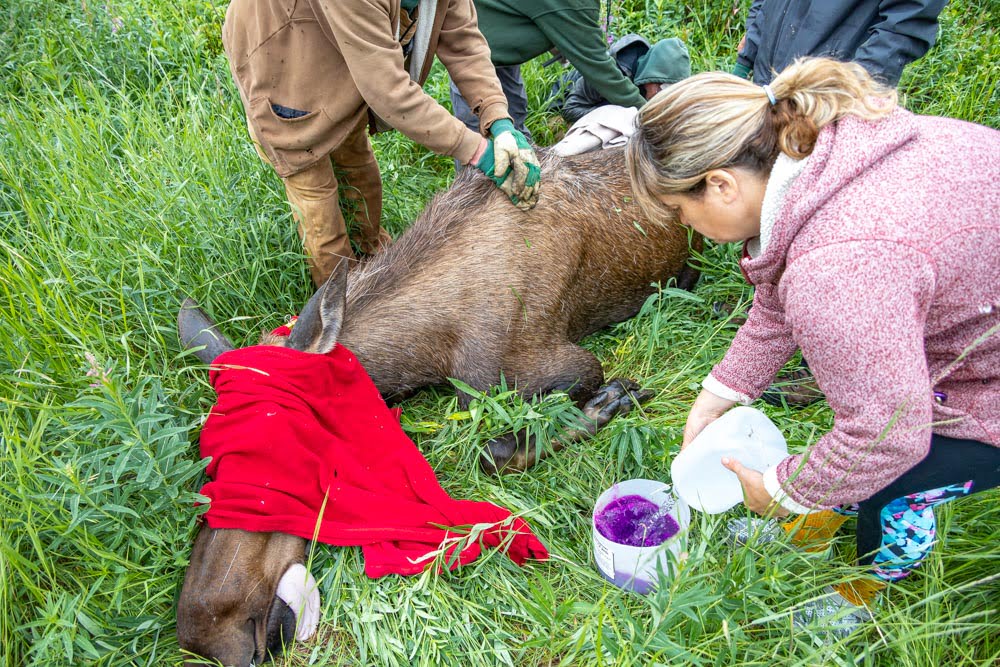
The team in action
It takes a large team to care for a moose out in the field like this.
Even something simple like repositioning Jesse’s leg requires everybody.
• • •
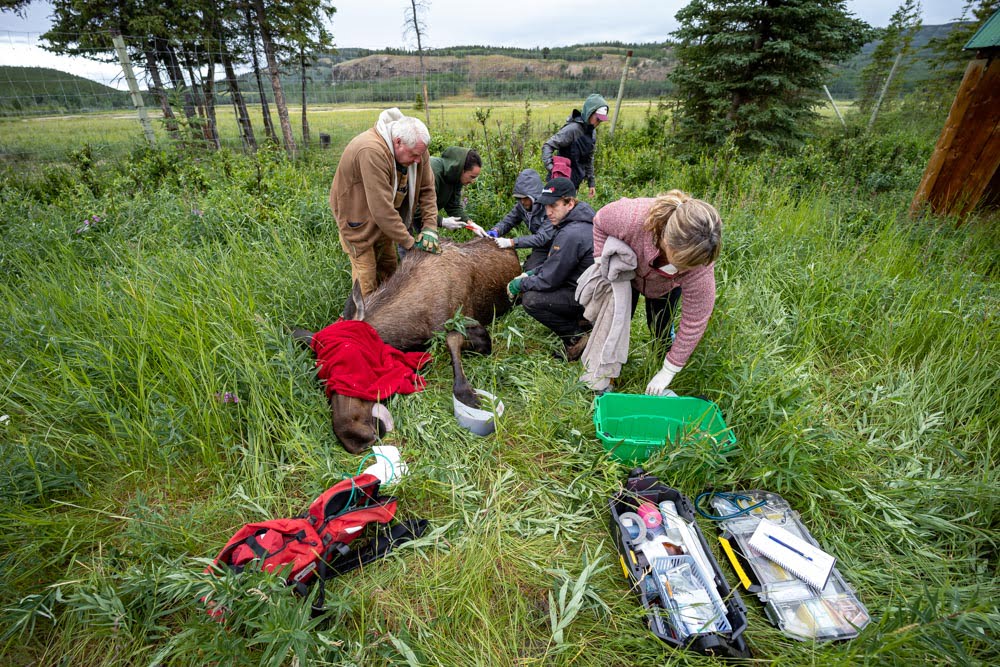
Tracking Vitals
Throughout the entire procedure, Bree kept track of Jesse’s vital signs. This included heart rate, breathing rate, temperature and blood oxygen.
Tracking these vital signs help anticipate potential problems before they become serious.
• • •
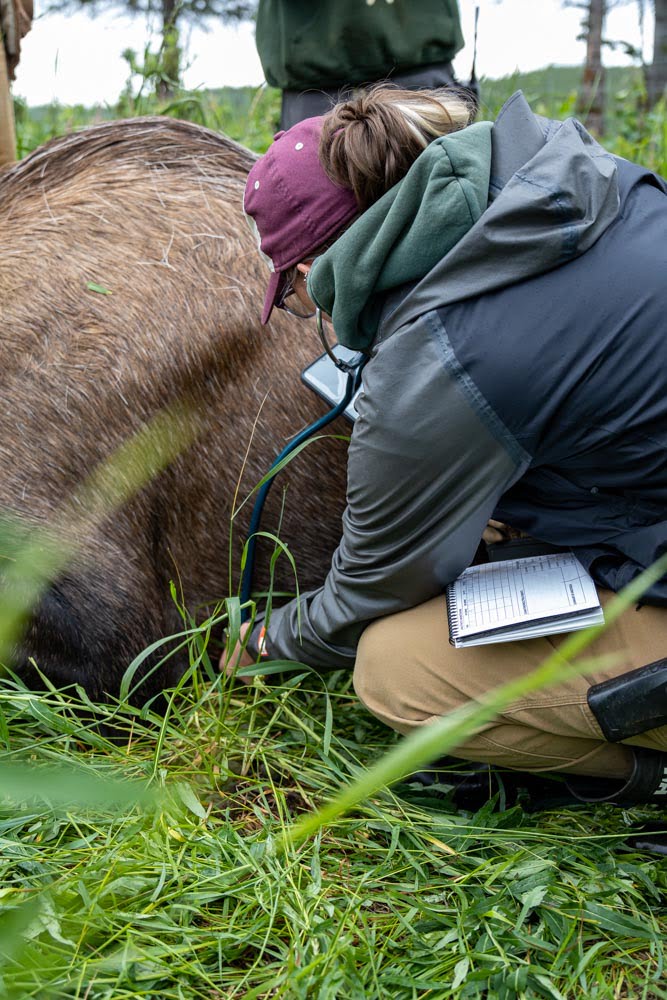
Multitasking
While Jesse’s hoof soaks, Outdoor Operations Staff Jared and Andrea lent a hand. They were administering a pain medication. It was applied to the skin along her spine. As the medication absorbed through it provided some relief from the pain.
• • •
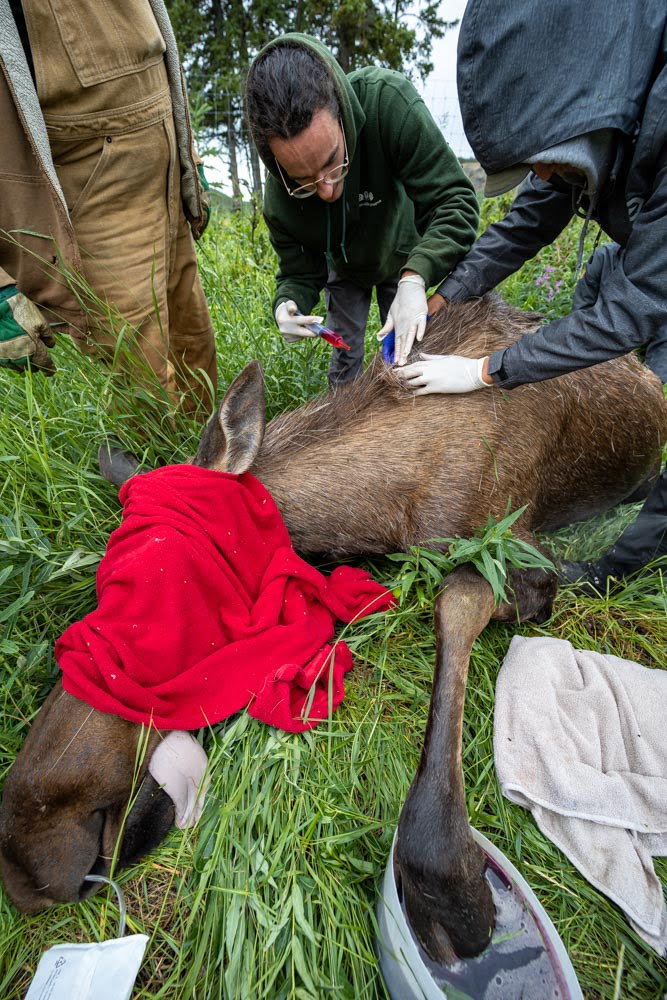
Antibiotics
Meanwhile, Dr. Hallock gave Jesse antibiotics. These will help prevent infection while the wound heals.
• • •

Exam and cleaning
Now that the hoof was a lot cleaner, Dr. Hallock could examine the injury.
She flushed out the wound and prepared it for bandaging.
For an animal this size, it looks like a tiny injury. But it’s in a sensative spot. As a result, this injury was enough to prevent Jesse from using this leg.
• • •

Bandage Artist
Dr. Hallock prepped the bandages. Her goal was to do everything she can for this injury while Jesse is sedated. This bandage sandwhich included a charcoal/silver dressing, a manuka honey dressing, aloe vera, and more antibiotics.
Sedating an animal is stressful. Doing as much as possible means they can wait longer before needing to sedate Jesse again.
Hopefully it will be another week or two before a bandage change is needed.
• • •

Inquisitive Moose
By this time, the rest of the moose had noticed something was going on.
They all trooped over to peer through the fence!
• • •
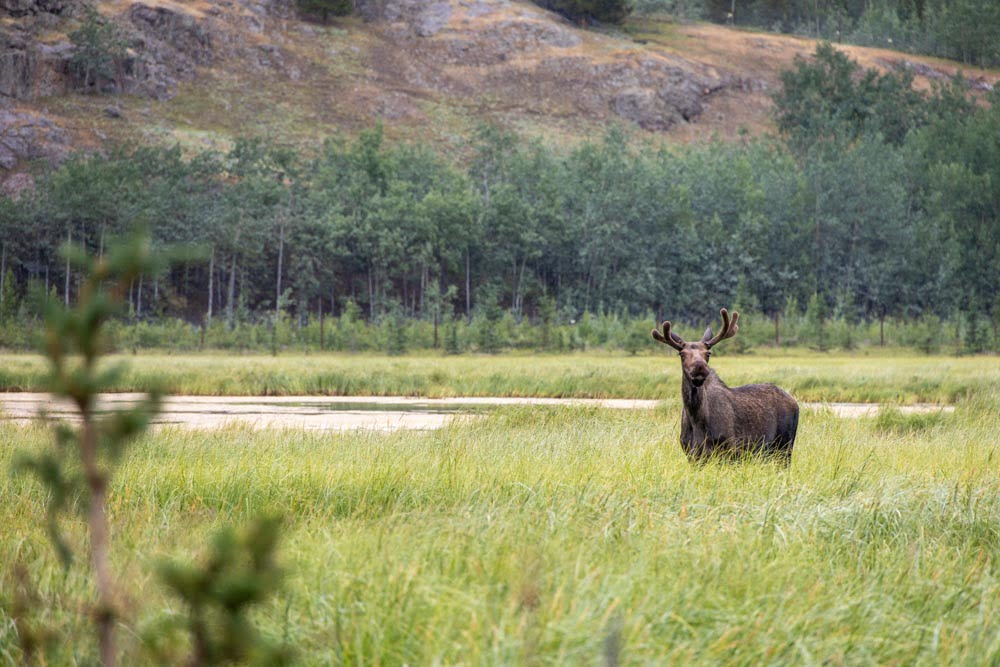
No Moose Flies on Jesse
Well actually, there were quite a few at first.
“Moose flies” are a normal, but annoying part of a moose’s summer.
The flies bite the backs of the moose’s legs where the fur and skin is thinner. As a result, you’ll probably notice sores on the backs of our moose’s legs.
The water in the wetland provides some respite from these flies.
Dr. Hallock took the opportunity to give Jesse some extra relief. She sprayed an antiseptic spray on the backs of Jesse’s legs. Next she use a long acting spray on bug dope made for horses. The effect was instantaneous!
• • •
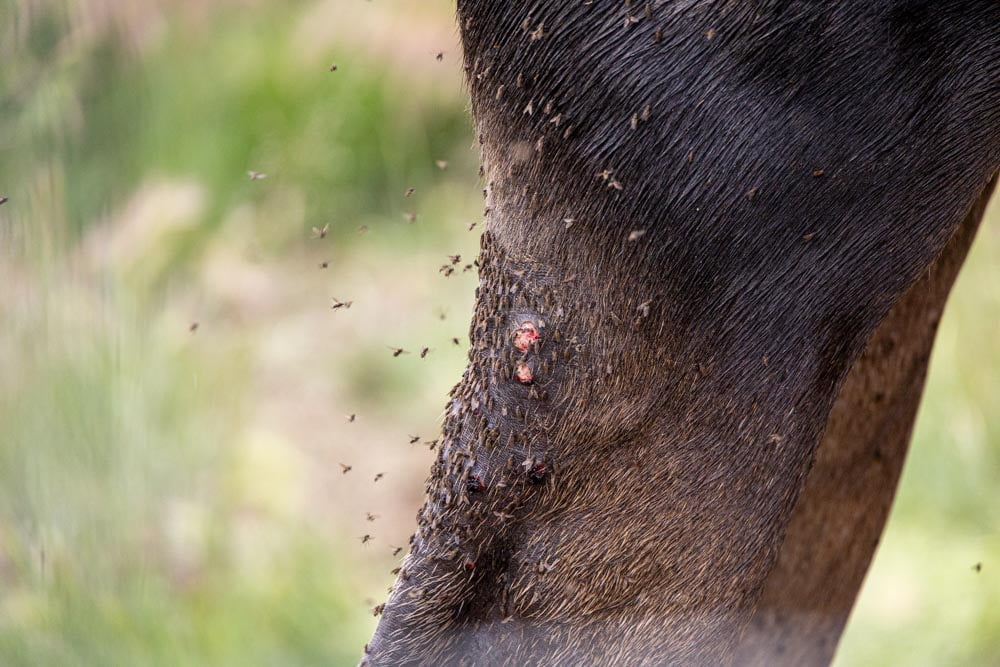
Finishing Up
It was around this time that Dr. Hallock was finishing up the bandaging.
Keeping a bandage on an unenthusiastic moose’s foot requires solid bandaging technique – and duck tape!
With the procedure complete, they administered drugs to reverse the effects of the sedatives. The team quickly withdrew. Within minutes Jesse was regaining control of her body and looking around.
Dr. Hallock will keep Jesse out of the wetland for the remainder of the summer. Staying out of the water will help keep the wound drier and cleaner, giving it time to heal.
If you’re visiting the Preserve this summer and see a female moose sharing the male mule deer habitat – that’s Jesse!
• • •
Photos by Jake Paleczny and Lindsay Caskenette.
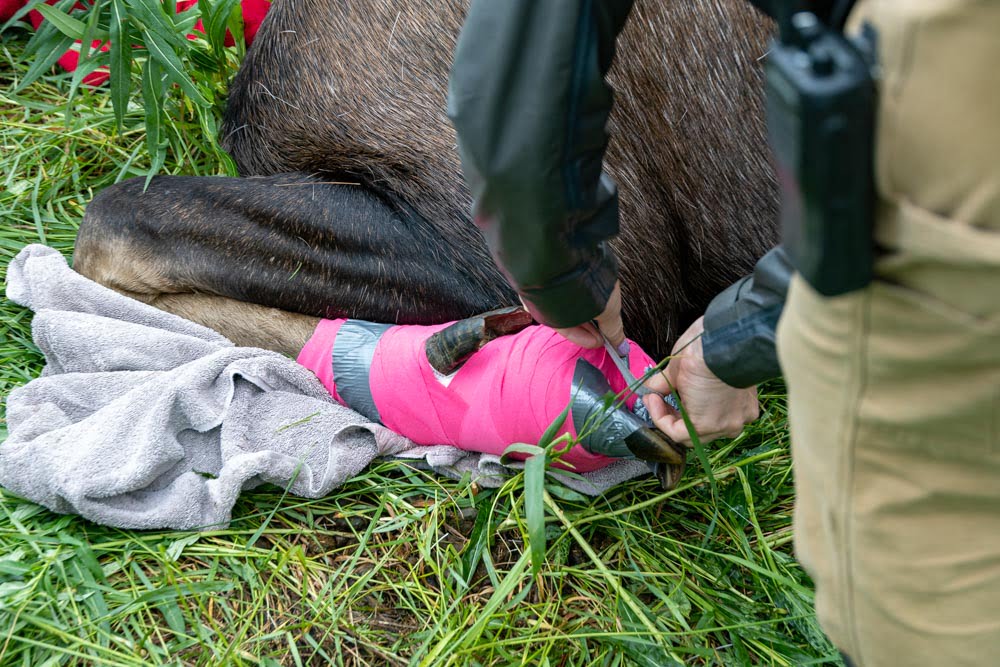

Jake Paleczny
He/Him - Executive Director/ CEO
Jake Paleczny is passionate about interpretation and education. He gained his interpretative expertise from a decade of work in Ontario’s provincial parks in addition to a Masters in Museum Studies from the University of Toronto. His interests also extend into the artistic realm, with a Bachelor of Music from the University of Western Ontario and extensive experience in galleries and museums.

Box 20191
Whitehorse, Yukon
Y1A 7A2



0 Comments